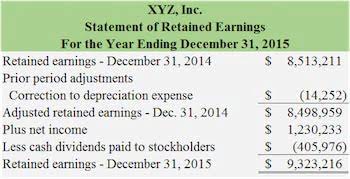
Liabilities can help companies organize successful business operations and accelerate value creation. However, poor management of liabilities may result in significant negative consequences, such as a decline in financial performance or, in a worst-case scenario, bankruptcy. AP typically carries the largest balances because they encompass day-to-day operations. AP can include services, raw materials, office supplies, or any other categories of products and services where no promissory note is issued.
Journal Entry for an Accrued Liability
He is the sole author of all the materials on AccountingCoach.com. For the past 52 years, Harold Averkamp (CPA, MBA) has worked as an accounting supervisor, manager, consultant, university instructor, and innovator in teaching accounting online. Evan is a writer and entrepreneur with a background in technology and content marketing. Previous to Sagetap, he was was co-founder & CEO of the online publication Selling Signals, which was acquired in 2022, and served as General Manager for the online publication Fit Small Business. A single-member LLC is owned by a single person and all profits and losses pass through to their tax returns. Meanwhile, a two-member LLC is owned by two people and all profits and losses are passed through to the two owners based on their ownership percentages.
What Is Accrued Liability?

Examples of contingent liabilities include warranty liabilities and lawsuit liabilities. Also sometimes called “non-current liabilities,” these are any obligations, payables, loans and any other liabilities that are due more than 12 months from now. The portion of the vehicle that you’ve already paid for is an asset. Financial liabilities can be either long-term or short-term depending on whether you’ll be paying them off within a year. A contingent liability is an obligation that might have to be paid in the future but there are still unresolved matters that make it only a possibility, not a certainty.
Debits and credits
Lawsuits and the threat of lawsuits are the most common contingent liabilities but unused gift cards, product warranties, and recalls also fit into this category. Let’s look at a historical example using AT&T’s (T) 2020 balance sheet. The current/short-term liabilities are separated from long-term/non-current liabilities.
- Liability accounts are crucial in understanding a company’s financial health, mapping out obligations like accounts payable, long-term debts, and accrued expenses.
- In simple terms, having a liability means that you owe something to somebody else.
- Accounts Payable refers to a business’s obligations to suppliers and creditors for purchases made on an open account.
- Charlene Rhinehart is a CPA , CFE, chair of an Illinois CPA Society committee, and has a degree in accounting and finance from DePaul University.
- Accounts Payable organizes and maintains vendor contact information, payment terms, and Internal Revenue Service W-9 information either manually or using a computer database.
By far the most important equation in credit accounting is the debt ratio. It compares your total liabilities to your total assets to tell you how leveraged—or, how burdened by debt—your business is. Because most accounting these days is handled by software that automatically generates financial statements, rather than pen and paper, calculating your business’ liabilities is fairly straightforward.
- Liabilities are intrinsically linked to financial obligations – entities’ commitments to fulfill their promises.
- Current liabilities can include things like accounts payable, accrued expenses and unearned revenue.
- Liabilities are listed on a company’s balance sheet and expenses are listed on a company’s income statement.
- Accounts Payable is presented as a current liability on a company’s balance sheet.
- It’s worth noting that liabilities are going to vary from industry to industry and business to business.
- Most state laws also allow creditors the ability to force debtors to sell assets in order to raise enough cash to pay off their debts.
Keep in mind your probable contingent liabilities are a best estimate and make note that the actual number may vary. In the accounts, the liability account would be credited, which increases the balance by $100,000. At the same time, the cash account would be debited with the $100,000 of cash from the loan. This means what is liability account that debit entries are made on the left side of the T-account which decrease the account balance, while credit entries on the right side will increase the account balance. In the above example, the debit to the contra liability account of $100 lets the company recognize that the bond was sold at a discount.

The outstanding money that the restaurant owes to its wine supplier is considered a liability. Liabilities refer to short-term https://www.bookstime.com/ and long-term obligations of a company. Liabilities and equity are listed on the right side or bottom half of a balance sheet.

Single-Member LLC Defined
The balance sheet is one of three financial statements that explain your company’s performance. Review your balance sheet each month, and use the analytical tools to assess the financial position of your small business. Using the balance sheet data can help you make better decisions and increase profits. Balance sheet presentations differ, but the concept remains the same. Some businesses prefer the account-form balance sheet, wherein assets are presented on the left side while liabilities and equity are presented on the right (see highlighted part).
What Is a Contra Liability Account
- In finance, a contra liability account is one that is debited for the explicit purpose of offsetting a credit to another liability account.
- Many businesses take out liability insurance in case a customer or employee sues them for negligence.
- Current liabilities are used as a key component in several short-term liquidity measures.
- For the past 52 years, Harold Averkamp (CPA, MBA) has worked as an accounting supervisor, manager, consultant, university instructor, and innovator in teaching accounting online.
- After almost a decade of experience in public accounting, he created MyAccountingCourse.com to help people learn accounting & finance, pass the CPA exam, and start their career.
- Liabilities are carried at cost, not market value, like most assets.
